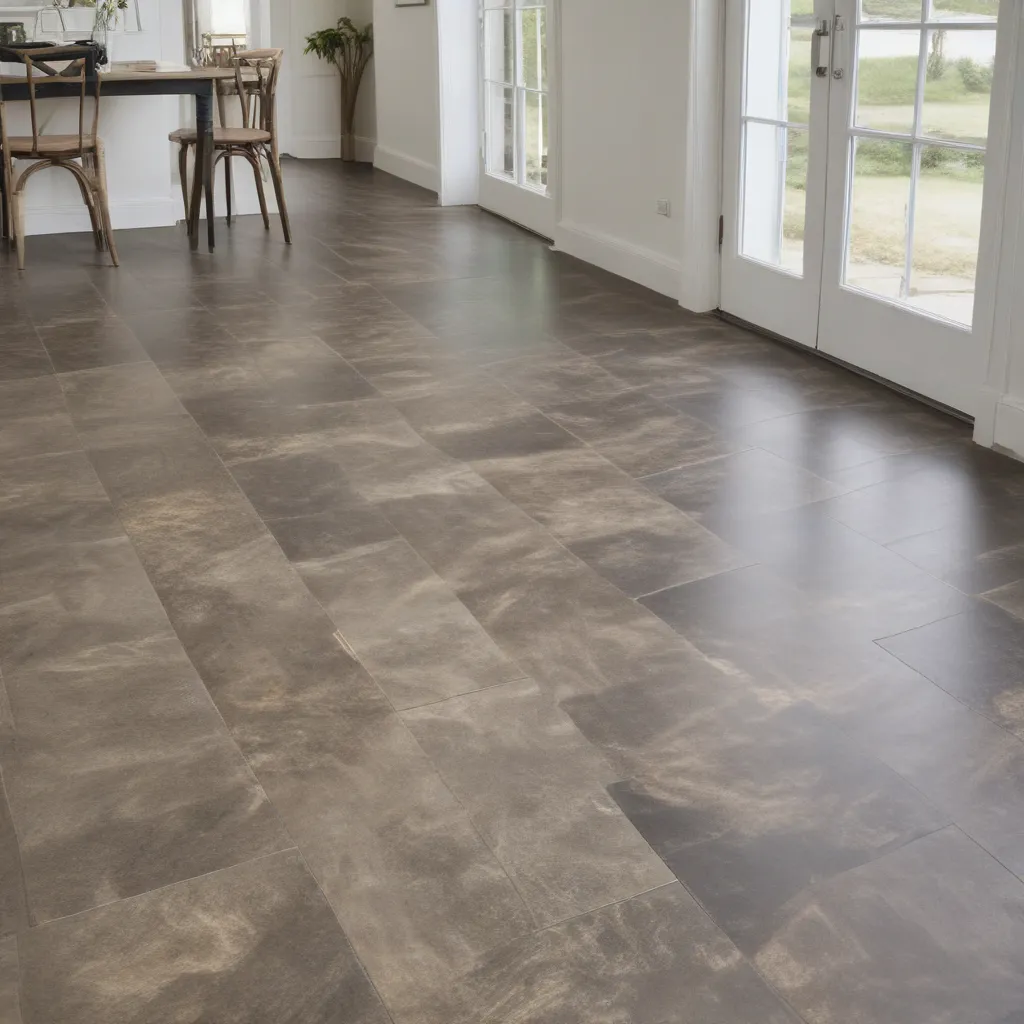
Floors That Keep You Cozy and Your Bills Low
As a self-proclaimed home improvement enthusiast, I've spent countless hours poring over design magazines, watching renovation shows, and dreaming up the perfect floor plan for my own abode. But you know what they say - it's what's underfoot that truly matters. That's right, folks - your flooring choices can have a significant impact on the energy efficiency of your home.
Energy efficiency is serious business for new home buyers. In fact, the National Association of Home Builders found that the average home buyer is willing to shell out an extra $8,728 upfront on a home just to save $1,000 a year in utility bills. Sure, we've all heard about the wonders of energy-efficient lighting, insulation, windows, and appliances, but did you know that your flooring can also play a crucial role in keeping your home toasty and your bank account happy?
The Thermal Superhighway: How Floors Impact Energy Efficiency
Picture this: you step out of bed on a chilly winter morning, only to be greeted by the icy chill of a bare floor. It's enough to make anyone want to dive back under the covers and hibernate until spring. But what if I told you that the very surface you walk on can actually help regulate the temperature in your home?
It all comes down to the concept of thermal conductivity. Some materials, like natural stone or ceramic tile, are better at absorbing and releasing heat than others. These "thermal superheroes" can actually help keep your home warmer in the winter and cooler in the summer, ultimately reducing your energy consumption and utility bills.
Radiant heating systems, for example, work by transferring heat directly to the floor, which then radiates that warmth throughout the room. This method is much more efficient than traditional forced-air systems, which can lose a significant amount of heat through ductwork. And let's not forget about the cozy comfort of a plush carpet - its low thermal conductivity acts as a natural insulator, keeping the heat where you want it.
The Flooring Face-Off: Exploring Energy-Efficient Options
Now that we've established the importance of energy-efficient flooring, let's dive into the nitty-gritty and explore some of the top contenders in this eco-friendly showdown.
Natural Stone and Ceramic Tile
When it comes to natural flooring options, stone and tile are tough to beat. These materials have the ability to absorb heat during the day and slowly release it throughout the evening, helping to regulate the temperature in your home. And in hot climates, tiles shielded from the sun can actually stay cooler for longer, potentially reducing your air conditioning costs.
But don't let their cool-to-the-touch nature fool you - these floors are true energy-saving superstars. Ceramic tiles work especially well with radiant heating systems, efficiently transferring warmth from the floor up into the room.
Hardwood Floors
Another natural gem in the flooring world? Hardwood. These tough-as-nails floors are masters at absorbing heat, which helps keep your home warmer in the winter and cooler in the summer. Just be sure to work with your builder to choose the right wood type and thickness for your specific climate.
Carpeting
Ah, the comfort of plush carpeting - it's not just a pleasure for your tootsies, but also a sneaky way to boost your home's energy efficiency. Carpet's low thermal conductivity means it acts as an effective insulator, trapping heat in the room and preventing it from escaping through the floor. This can be especially beneficial in downstairs areas or drafty rooms where heat would otherwise dissipate.
But don't just slap down any old carpet and call it a day - be mindful of the thickness and padding you choose. A thin carpet with dense padding will work best to maximize energy savings without compromising that plush, cozy feel.
Radiant Heating Systems
If you really want to take your energy-efficient flooring game to the next level, consider investing in a radiant heating system. These cutting-edge systems work by pumping heated water or electricity directly through the floor, providing a more efficient and evenly distributed source of warmth compared to traditional forced-air methods.
The key to getting the most out of a radiant system? Choosing the right flooring material. Ceramic tile and laminate wood flooring are ideal, as they conduct heat well and won't be damaged by the high temperatures. On the other hand, solid wood floors may not be the best match, as the heat can cause them to shrink and crack over time.
Putting it All Together: Creating an Energy-Efficient Oasis
Now that you've got the lowdown on energy-efficient flooring options, it's time to put this knowledge into action. As you embark on your next home renovation or new construction project, be sure to work closely with your builder or flooring expert to explore all the possibilities.
At I Living Homes, we take energy efficiency seriously. We'll work with you to carefully consider your climate, lifestyle, and budget to create a customized flooring solution that keeps you cozy and your utility bills low.
So, what are you waiting for? It's time to ditch the drafty, energy-guzzling floors and embrace the power of eco-friendly options. Your wallet (and the planet) will thank you.
